|

June-August 2007
|
BLACK
HORSE EXTRA
David Whitehead's Fifty Notches Hoofprints
A Primer in Realistic Ballistics
Let's Do the Twist! New Black Horse Westerns
A sentence in our top feature below notes that Black Horse Extra has gone from strength
to strength. This is in the sense that the March edition attracted more
visitors than any before it. At the two-month point in its term, the edition
had received more hits than each of its predecessors over a full three months.
The improving results since the venture was launched are due to the effort
and support of a small, dedicated group. Our core interest is the Black
Horse Western novels published by Robert Hale Ltd, of London. These books
are written by a team of perhaps two dozen freelance writers. An accurate
tally isn't easy because of a tendency for the writers to come and go and
for some to work under several different pen-names simultaneously. Of the
active writers, only a minority are known to bother with spreading via the
Net the message about the continuing availability of what is broadly known
as the traditional western.
Everyone associated with Black Horse Extra would welcome participation
by their silent colleagues . . . their revelations, their fresh ideas, their
news. And readers' views are equally important to us. You can reach us without
obligation and promptly at feedback@blackhorsewesterns.com
Elsewhere, debate continues about the state of the western genre and the
need for it to be saved. In particular, US editor and book packager Russell Davis has been
making a commendable effort at his new blog Westerns for Today, with tentative
suggestions for a publishing venture and an education drive, plus an appeal
for more email activity, websites and blogs. It's a cause already dear to
hearts at Black Horse Extra and we hope to be able to lend a voice to Russell's
campaign. A good starting point is encouraging wider interest in the ten
new Black Horse Westerns published every month.
The gather on this range today includes an interview with genre stalwart
David Whitehead, a follow-up on western weaponry by Greg Mitchell, whose
article on the Walker Colt last time produced a unanimously complimentary
response, and the always popular gallop that produces Hoofprints.
Happy reading!
|

|

|
The Extra interviews 'Ben Bridges'
DAVID WHITEHEAD'S FIFTY NOTCHES
Knowing that if George wasn’t already dead, he very soon would be, O’Brien
turned his attention back to Pistol-Whipper, expecting -- hoping -- to see
the man turning tail and lighting a shuck.
Instead, he found himself staring right down the barrel of his
opponent’s Cavalry Colt.
He thought, Damn!, which was pretty mild considering
that he’d just used up his fifth and final shot on George, and the Lightning
in his fist was now empty.
Hard on the heels of that, he thought about the Winchester .45/.60
in the scabbard under his right leg, although he knew he’d never be able
to draw, aim, lever and fire the rifle before Pistol-Whipper blew him out
of this life and into the next.
All of which left him with only one other weapon to which he
had immediate access -- a weapon he used without further ado.
He bawled, “Yee-haah!” again, and the blood-bay beneath
him powered forward into a flat-out gallop, all thousand pounds-plus of
it headed straight for his adversary.
Draw
Down the Lightning
Ben Bridges
PEOPLE on the western fiction scene are far more familiar with David
Whitehead talking about other writers' work than his own. David has been
promoting the genre, championing the genre and recording the genre's history
for -- gasp! -- more than 25 years.
To general applause, David has been a real friend of Black Horse Extra
from its outset, contributing several major articles. This has been more
important than can be imagined by those not in a position to know what
goes on behind the scenes. At a pre-existing Net forum, a couple of BHW
authors, who shall remain nameless, had the odd notion that anyone expressing
views not suiting themselves or their friends should be denied an audience and fellowship. "I will not allow
any emails regarding another version of [BH newsletter] to be passed through
this group," said the man in charge. "Anyone doing so will be automatically
removed."
|
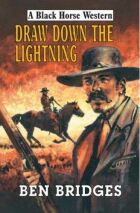

|
|
For a writer of David's stature -- among others -- the attempted ostracizing
cut no ice, and the Extra has gone from strength to strength, enabled to
do so with thanks from the books' publishers and by the unselfish donation
of authoritative material like David's fine features on Lauran Paine and
Marshall Grover.
The occasion of the publication of David Whitehead's fiftieth book -- a list that began with The Silver Trail in 1986 -- was
scarcely needed to prod us into turning the tables and demanding an interview.
BHE: First, congratulations on notching up fifty books! That’s
quite an accomplishment.
DW: Well, not if you compare me to the likes of Lauran Paine
or Geoffrey John Barratt, but I know what you mean, and I have to confess
that reaching this milestone has given me a great sense of achievement.
|

|
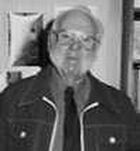
J. T. Edson
|
BHE: What can you tell us about your new book -- your first
in something like five years?
DW: Draw Down the Lightning is my fourteenth
Carter O’Brien yarn and I think it recreates the spirit of the earlier
O’Brien stories pretty well, in that he gets hired to solve or otherwise
deal with a seemingly insoluble problem and somehow, against all the odds,
manages to work everything out. The idea came from a TV show I happened
to chance upon one afternoon about fifteen years ago. It was all about
adopted children trying to find their birth parents. That in itself didn’t
provide the plot, though -- it was the occupation of one of the missing
fathers that really got me thinking. I won’t say too much, because I don’t
want to spoil the surprise, but it does go to show just where ideas can
come from.
BHE: Over the last few years you’ve become a regular commentator
on the western genre. Is it fair to say that you’ve always been a western
fan?
DW: Very much so. I was first introduced to the genre by
my father, who was a big western fan himself, so I was more or less born
all fired-up by the enormity of the land, the fortitude and optimism of
the pioneers, the code of honour the good guys were supposed to stick to
and the neighbourliness of those folks whose only hope for survival was
to stick together. I started reading westerns when I was about nine or
ten years old, beginning with J. T. Edson and Marshall Grover, both of
whom I eventually got to know pretty well. I started writing my own westerns
around the same time -- my first continuing character was “Clint Jones,
Railroad Detective”.
BHE: It has been reported that you wrote about twenty books
before you scored your first acceptance back in 1986.
|
|

Peter Watts
|
DW: That’s right. In 1974, at the tender age of sixteen,
I decided to stop writing just for my own amusement and to start producing
books of a more publishable standard. I wrote horror novels, westerns,
romances, non-fiction, all sorts, but all I got back from publishers was
rejection slips. I even embarked upon a massive project called Who’s
Who in Western Fiction, which I never did complete. Eventually I
decided to give it all up as a bad job, but then I injured my back, and
whilst recovering decided to dust off an old manuscript and revise it according
to comments and suggestions I had received from Peter Watts, better-known
as Matt Chisholm and Cy James. London publisher John Hale, of Robert Hale
Ltd, liked the end result and said that if I could cut out about 40 pages,
he would consider it “sympathetically”. I did, he did, and the rest is
history!
|
|

Terry Harknett
|
BHE: And along the way, of course, you started the Edge fan
club.
DW: Yes, that was in 1976. And I must say, the great privilege
and absolute pleasure of meeting Edge books author Terry Harknett turned
out to be one of those life-changing moments for me, because as soon as
I discovered that Terry wasn’t just George G. Gilman, but also Charles
R. Pike, William M. James, Joseph Hedges and Lord knows who else, I realized
that this was what I wanted to do as well -- to write westerns and masquerade
as different people.
BHE: How do you go about writing a book?
DW: For me, a new book always begins with one basic, I hope
“different” idea. The idea has to be new and original, otherwise it’s hard
to get excited about it. I want to appeal to both the traditional and
modern western reader, but not give him that dreaded sense of déjà vu
where he thinks, "Here we go again. Another range war. Another band of
renegade Indians. Another outlaw gang trying to recover lost loot."
Once I have the idea, it’s just a matter of getting it all down
in roughly the right order, throwing in a few set-pieces, some surprises
and an interesting supporting cast. All this may sound rather clinical,
of course, but it's just the planning. If there is any “art” involved, that
comes with the writing, of maintaining an original, interesting style that
keeps the reader turning the pages, of solving any problems the plot may
throw up along the way, of keeping things moving at just the right pace,
of building the characters layer by layer and finally tying the whole thing
up neatly within the required length. I haven’t always succeeded, but I
do care very deeply about the story and the characters, and would rather
have my teeth drawn than insult the reader by producing a second-rate piece
of work.
|

|
|
Ideas -- as you know -- come from anywhere and everywhere.
Squaw Man owes everything to one throw-away sentence I
read elsewhere. Coffin Creek had its beginnings in one boring
Saturday afternoon when I sat down and watched a kung fu movie called The
New One-Armed Swordsman. The Spurlock Gun was a westernized
retelling of an earlier, unpublished action-adventure novel I wrote called
City Combat.
BHE: What do you see as the major themes of the western?
DW: That good can triumph over evil. That with enough courage,
determination and grit, mankind can overcome any obstacle. That sometimes
a man or woman has no choice but to make a stand, and that by making
that stand they can actually change things for the better. Essentially,
the western is and always will be a morality play. We read them to affirm
to ourselves the validity of these ethics.
|

|
|
BHE: Clearly, you believe that the western has endless possibilities
and permutations.
DW: Without doubt. If you are creatively minded, and you
really care about your chosen genre, you can sit down and dream up a new
slant on practically any theme. All it takes is time and a little serious
thinking. But you’ve got to really want to create something original
to begin with.
BHE: Who are your favourite writers?
DW: It’s difficult to pick favourites. Some writers I enjoy
more than others, but overall what appeals to me is the basic sincerity
that every western writer brings to his work, that very genuine desire to
tell a good story the best way he or she knows how. I don’t get that feeling
with any other genre. There’s definitely something sincere about western
writers that I really like.
BHE: Then why do you think the genre is often maligned?
DW: If we’re going to be really honest about it, there have
been an awful lot of lousy westerns written over the years, so you can’t
blame readers for turning their attention elsewhere. In the past, characters
have remained one-dimensional or stereotypical, or the writers themselves
have continued to give the reader violence when what he really wants
is action.
BHE: What would you say have been the most important advances
in western fiction?
DW: The single biggest development has been the awareness
of just how important character is in a story. In the early days, characters
were clear-cut -- with one or two exceptions -- and cardboard in the
extreme. But in the early 1950s a new breed of western writer came along,
and decided to mix a little of the good and the bad into their characters.
Suddenly, the hero didn’t have all the answers. He was frequently as troubled
and uncertain as the folks he set out to help. The villains, too, have
undergone a positive metamorphosis. They have become villainous for a
reason -- a less-than-perfect upbringing, maybe, or a catastrophic experience
which soured them to life and what life had to offer. They became victims
of fate -- they all became victims of fate. And that has made the whole
genre much more interesting.
|


|

|
BHE: So what do you think makes a good western?
DW: Above all, a good western should make the reader share
all the emotions of the hero, with whom he or she instinctively identifies,
anyway. You want to make the reader feel the heat of the desert, the chill
of a mountain pass in winter, the smell of pine needles, the cool freshness
of the water in a secluded stream. You want to make him feel everything
the hero feels -- pain, joy, love, hate, even the savage satisfaction,
or stomach-turning revulsion, of finally settling things with the bad guy.
Make them feel exhausted, saddle-sore or determined. In short, you have
to make the experience as real for the reader as you can, write with authority,
and make sure they keep turning the pages.
BHE: After fifty books, do you still have plenty to say?
DW: I wouldn’t really claim to have anything to say, as such.
I have no message, no agenda, no ego. I see myself simply as an entertainer.
When you sit down with one of my books, my job is simply to entertain you.
If, along the way, I can also enlighten you, educate you, fascinate you
or fire you up, well, that’s a bonus! But I wouldn't kid myself on that
any of my books are particularly "important" in that way. Their job is solely
to help you forget about your lousy job, your demanding partner, your unpayable
mortgage.
BHE: What do you have lined up for the future?
|

|

|
DW: By a twist of fate, my 51st book, a romance called Winterhaven,
came out two months before my 50th. Three other romances as by "Janet
Whitehead" are all backed up and awaiting reissue in large print. I’ve
just completed a new script for the Commando war comic series,
which brings my total up to around thirty or so. And I’m writing a new
BHW called All Guns Blazing, which is a collaboration with
the German western writer Alfred Wallon. My next solo BHW will be Send
for Morgan Starr which I’m really looking forward to. I’ve been
plotting this one for a while now, and I think it’s going to be a good
one.
BHE: I’m sure it will, David! Thank you.
|

|
|
|
|
 Bryson's reality.
Bryson's reality.
|
A set of fresh impressions
HOOFPRINTS
In Made in America, US-born, English-resident writer Bill
Bryson described the history of the English language in the United
States and the evolution of American culture. Naturally, he had a word
or two for the western. The genre's classic writers included Zane Grey, a dentist from New York City, who
knew about as much of the Old West as the average "city slicker" would, and Clarence
J. Mulford, who created in Hopalong Cassidy a cowpoke as fictional
as any has been. Neither author let ignorance of the subject matter stop him telling a
captivatingly romantic and, more essentially, saleable story. Real cowboys
mostly had boring lives that consisted largely of driving cows across
lonely, near endless American plains. Bryson said, "They certainly
didn't spend a lot of time shooting each other. In the ten years that
Dodge City was the biggest, rowdiest cow town in the world, only thirty-four
people were buried in the infamous Boot Hill Cemetery. Incidents like
the shootout at the OK Corral or the murder of Wild Bill Hickok
became famous by dint of their being so unusual."

|
|
|
Between 1887 and 1900, Karl Friedrich May (1842-1912),
fifth of fourteen offspring of an impoverished Saxony weaver, and a former
convict, wrote more than twenty adventure novels set in the American West,
including Winnetou and Old Surehand, giving
rise to the claim that the western was a German creation. May worked with
the aid of encyclopaedias, atlases, ethnological studies -- and an inexhaustible
imagination. He didn't visit the US till 1908 and didn't go farther west
than Buffalo, New York. Between 1912 and 1968, German film makers produced
23 movies based on his novels. In 13 of them, American actor Lex Barker
starred, sometimes as Old Shatterhand, "strong as a bear and invincible".
Three movies cast Briton Stewart Granger in the lead as Old Surehand.
Every summer, thousands of Karl May admirers attend an open-air Karl May
Festival in Bad Segeberg, Schleswig-Holstein, which has been held since
1952. Though largely unknown in the US, May has fans around the world, including
China, Japan, and Indonesia where a Karl May Society has its own website.
|

Father of western?
|
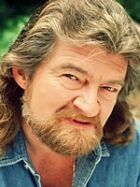
Joe the cynic.
|
Terry Harknett (aka George G. Gilman,
author of the famous 1970s Edge series) told his Piccadilly
Cowboys forum, "The book I am currently reading is The Devil’s
Guide to Hollywood by Joe Eszterhas, probably the most
successful screenwriter in the world. He is a bit of a cynic but I think
he tells it as it is for most of the time, based upon his experience of
movie work. Relevant to members of this message board is the following snippet
from his book: ‘ Don’t write a western. The odds are overwhelming that it
won’t be made and that if it is it will fail. Almost every year or so
there is a failed attempt to do a western – some, like Larry Kasdan’s
Wyatt Earp, have been especially good, but the public doesn’t
seem interested. A producer said to me, "A western in space, yes, a hip-hop
western, yes, but a western with horses, absolutely not."’ Depressing,
isn’t it," Terry said, "coming from the man who wrote Basic Instinct,
Jagged Edge, Flashdance and Showgirls
amongst others and so obviously knows of what he speaks."
But Eszterhas's reputation meant less than nothing to Terry's fellow Piccadilly
Cowboy Mike Linaker, aka BHWs' John C. Danner, Richard Wyler
and Neil Hunter: "There are screenwriters out there who could
outshine Eszterhas with their eyes shut."
|
|
|
Chap O'Keefe describes his BHW heroine Misfit Lil
as dark-haired and grey-eyed. Reader Jo Neville, of Torquay,
England, comments that this is a fairly unusual combination. By way
of response, O'Keefe supplies a quote from Carl W. Breihan's
book Great Gunfighters of the West, in which the young Bat
Masterson is described thus: "Bat looked as harum-scarum as he behaved.
He had a mop of black hair with oddly contrasting light grey eyes that
danced with devilry and merriment. He was of medium height, slender but
wiry, strong, and resilient. In store clothes and with his hair slicked
down, he was described as one of the handsomest men on the frontier. But
it was his slate-grey eyes that attracted attention. Gunfighters came in
all shapes, sizes and temperaments, but almost invariably they had blue
eyes." Misfit Lil's unusual eyes will sparkle next in Misfit Lil Fights
Back, out in July. For new readers, more about Lil can be found in
our Backtrails article "The Images of Inspiration" (BHE September edition).
|
 To Bat for Lil.
To Bat for Lil.
|
 From tall ships to tall tales.
From tall ships to tall tales.
|
Award-winning maritime-history writer Joan Druett tells us, "I
love westerns, a heritage of putting myself through university by ushering
at a B-grade movie theatre in Palmerston North, New Zealand. . . . I enjoyed
[the March] Black Horse Extra very much, especially the dissertation on the Colt.
I have to research arms occasionally, and used to drive to the Waiouru
Army Museum where there was a helpful sergeant. Once, I had to research
the Henry rifle, and the sergeant told a peculiar story about Abraham
Lincoln visiting both the Henry and Winchester workshops, and choosing
the Winchester for the Union army. Henry went bankrupt and killed himself.
The sergeant went on thoughtfully to say the ironic part of the tale was
that Lincoln was assassinated with a Henry rifle, not a pistol as the pictures
show. I think he was having me on." Our expert, Paddy Gallagher (aka
BHWs' Greg Mitchell) agrees. "Lincoln could not have visited the
Winchester and Henry factories. The first Winchester came out in 1866,
long after he was dead, when Oliver Winchester bought the Henry
company and improved on the Henry to make it the first Winchester. Lincoln
was shot with a Deringer, single-shot, muzzle-loading pistol. Later, when
variations of these weapons were made by a variety of companies, they
were called 'derringers' with an extra 'r'. The Winchester was never adopted
by the American army although some officers asked for them after General
Custer's defeat in 1876."

|
|
|
Keith Hetherington (aka Clayton Nash) tells Hoofprints he
had some doubts about his new book, Kid Lobo, in which
the hero, the best horsebreaker in West Texas, sets out to find the father
he never knew, the man who had run out on his mother, leaving her to work
herself to death in her efforts to raise him. Says the cover blurb, "He
wanted only one thing now: to find that man -- and kill him." Keith
says, "I wondered about this particular yarn, whether it would appeal
to publisher John Hale or not." But Mr Hale wrote, "I enjoyed Kid
Lobo, which is very tough stuff indeed. It all makes for a splendid
story which I am delighted to accept." Keith says he "allowed the characters
to kind of dictate what should happen next. It worked really well. I rarely
feel satisfied with my stories but this one seemed to hit the spot." We're
sure the book will be much enjoyed by BHW readers everywhere.
|
 Splendid cover, too.
Splendid cover, too.
|
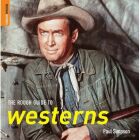 Homeric Jimmy.
Homeric Jimmy.
|
From the 1920s to the 1950s, the Hollywood studio system transformed
the violent, unruly facts of frontier adventurism into a body of myth, legend
and "moral clarity" to edify the most patriotic of Americans. But western
movies have been made all over the world. Everywhere, in fact, from China
and India to Russia and Czechoslovakia. In his recent book, The Rough Guide
to Westerns, entertainment writer Paul Simpson gives the reason as the universal
allure of sweeping historical sagas. Italian director Sergio Leone considered
western characters to be latter-day avatars of the ancient Homeric heroes,
and Argentine writer Jorge Luis Borges praised westerns for keeping epic
forms alive in the modern era. Simpson's style is informal and his verdicts
sometimes surprising in a generously illustrated and hugely wide-ranging
book. As a DVD-top companion, the work should please movie buffs and western
fans alike.
|
|
|
A title should be vivid and have rhythm, the advice goes -- never be weak, vague or old-hat. Vengeance/Hell/Lawless Valley permutations have had their day. Come See Me Hang is an arresting title for a western and
one which evidently appeals to BHW author Paul Wheelahan. In 1975,
he used it when penning a Cleveland paperback under the pen-name Brett
McKinley. The book told the story of young attorney Shell Tregarno,
who received via telegraph the brief, callous "come see me hang" message
from his n'er-do-well father, and a little later learned it was too late,
because pa had been lynched by a mob. In July, the title will be appearing
again, on a BHW under Paul's Chad Hammer byline. The new story features
as a central character a gunfighter called Ryan Bodie -- a name with
which Paul's readers will also be familiar, since he has previously used
it as a BHW pen-name. The blurb says, "Bodie would survive. He always did.
He was that kind of man." Well, he surely has survived, albeit in a changed
rôle!

|
 First time around.
First time around.
|
 New gateway.
New gateway.
|
Black Horse Westerns continue to enhance their presence on the Net. The
previous edition of this quarterly online magazine attracted more visitors
in two months than any previous edition in a full three. And on April 20,
publishers Robert Hale launched a much improved company website.
The bright new pages at www.halebooks.com offer secure, online
shopping facilities and competitive prices. BHWs are well represented,
with cover images and details for more than 200 titles, shrugging off the
"poor cousin" status afforded them in the print catalogues of bygone times.
Specialist site designers Ehaus say, "We believe that a publisher's website
should be more than a pale imitation of its print catalogue. It should serve
as the definitive source of authoritative and enhanced information on the
company's products."
|
|

|
Greg Mitchell puts us on target
A PRIMER IN REALISTIC BALLISTICS
"See how you like this you sheep-herding sonsofbitches."
He fired both barrels [of a sawn-off shotgun] into the approaching
riders. Eighteen large slugs tore into horses or men. Corbett's horse reared
straight over backwards. Tom Casey dropped his rifle as he was hit in the
right upper arm. Grazed by a slug, Mike Casey's horse started to buck and
collided with that of Perez. Suddenly all was confusion with plunging horses
and startled riders milling about.
Had Norris waited until his targets were closer, the shots would have
been more devastating but round balls fired from smooth bores lost power
rapidly after thirty yards and wounded rather than killed.
Warbonnet
Creek
Greg Mitchell
THE average nineteenth-century westerner was not a quick-draw artist.
He wouldn't compromise safety in carrying his gun by using a specially
made, loose holster likely to lose the gun while mounting or dismounting
from a horse or struggling with big calves at branding time.
Myth and reality exist side by side in many a western, in print or on
screen. But the tied-down holsters worn by fictional heroes and villains
were unknown until the US Army started tying down their automatic pistols
long after the Wild West was gone.
The working cowboy wore his gun fairly high on his hip where it would
not get in his way when riding or working on foot. The holsters were deep,
and in some cases tight-fitting, and the loop over the hammer spur that
crept into 1950s television westerns was not necessary.
The many photos of lawmen and cowhands taken in frontier times never show
a tied-down holster or a hammer thong.
The Texas Rangers, favoured by western pulp magazine writers and
readers of later times, had more than their share of gunfights. My own next
BHW, Red Rock Crossing, will tell of two Texas Rangers held
up by a flood. They have with them a prisoner -- a man fleeing a range war
and a sinister hired killer called Missouri Sam. And an important twist
in the story involves a gun.
For now, what I can reveal is that Texas Rangers didn't rely on quick
draws. They had a practice of always drawing their weapons before going
into dangerous situations. Survival was not a sporting event. Speedy draws
were no good without accuracy. In many documented gunfights, the first
shots were hasty and usually missed.
Intentionally shooting guns out of opponents' hands was virtually
impossible because shooter and target were both moving and there was no
time to aim, let alone calculate the correct amount of muzzle elevation
for the range. A revolver sighted to hit the point of aim at 50 yards would
place its bullets a little higher inside that range. It would make little
difference on a man-sized target but something as small as a man's hand
or a gun would most likely be missed. In life-and-death situations men usually
shot for the largest part of their adversary. A wound that slowed or disabled
an opponent was better than a clean miss because fancy shooting went wrong.
Revolvers are not easy to shoot because of the short sight radius and
the tendency to pull the weapon sideways if the trigger is not squeezed carefully.
Under favourable conditions, a trained revolver shot with a good weapon
can hit a man at 50 yards but the average shooter in a gunfight is more
likely to miss. Firing from horseback it would be good shooting to hit a
man anywhere at 10 yards' range.
A man holding back the trigger and fanning the hammer of a gun would
not be able to shoot accurately past a couple of yards. Nor can a man fire
two guns simultaneously and hit two different targets.
Revolver shots do not disembowel people or blow heads off. The study
of ballistics was only in its infancy in the nineteenth century and many
revolver bullets actually were under-powered.
The derringer, the pocket-sized gun featured by so many western writers
was a very poor weapon. The famous Remington over-and-under derringer fired
the .41 rimfire cartridge. Across a card table it was capable of killing,
but the cartridge was very low-powered and had been known to bounce off
trees at 15 yards. Most small revolvers and derringers were made of inferior
metal for lightness and their cartridges were low-powered to avoid blowing
up the guns. Because of the small grips and inadequate sights, derringers
were not accurate except at very close range.
Some writers like to introduce exotic weapons into their stories, but
ammunition for some of these would not be readily available on the frontier.
The Colt .45 and the Winchester repeating rifle were very popular, reliable
weapons so authors do not lack originality by using them in their stories
as long as they are used within the right time frames -- from 1866 with
the first model Winchester and from 1873 with the Colt .45.
The Wild West era was virtually over before high-powered rifles
became available to civilians. A high-power cartridge was one that travelled
at 2,000 feet per second or faster. The powerful rifles of the black-powder
era pushed their heavy bullets along somewhere between 1,400 and 1,600
feet per second and used much heavier bullets. They could throw bullets
up to a mile but because of their high trajectories accurate shooting was
only possible when the range was correctly calculated and the sights set accordingly.
Rifle shots at people more than 300 yards away were very difficult
with the Winchester repeaters and other carbines that were so popular
in the Old West. At that range the front sight almost completely covers
a man. A good shot using a rifle he knows, can still hit him, but cannot
guarantee where the bullet will strike. Different shooters hold their rifles
differently and not all are sighted exactly the same. A good shot using
a strange weapon could still miss. Telescopic sights were available as were
long-range target sights but these were not carried by the usual westerner.
They saw some use though among buffalo shooters and other professional hunters.
The killing range of a shotgun using shot cartridges is normally about
40 yards. If the weapon is sawn off, the lethal range would be about 30
yards as the shot is less concentrated. Heavy shot, like buckshot had a greater
killing power than light bird shot. But because the pellets are round and
not spinning like rifle bullets, all lose their velocity very quickly.
The main killing area of a shotgun is about a 30 inch area where most of
the shot is concentrated. A blast from a shotgun in not going to mow down
three or four men at 40 yards although it might seriously damage two.
Close-range shotgun blasts do not cut people in halves but they can
inflict terrible wounds. Shot spreads roughly 1 inch per yard that it travels.
The greater the distance, the less concentrated is the impact of the shot.
Heavy buckshot balls were around .30 calibre and at close range hit with
a lot of power, so sometimes one pellet in the right place could be fatal.
The advantage of a shotgun was that the spread of the shot gave the
shooter a good chance of hitting his target even if most of the load missed.
A shotgun is not likely to be destructive over a wide area because by the
time it has spread widely, the pellets are losing their power. But at 30
yards it will cover an area that could be three feet wide and still deliver
killing velocities.
The western writer who finds a hazy knowledge of firearms daunting cannot
take easy refuge in other weapons.
Knives were used occasionally in the Old West, especially in the days
of slow-loading percussion firearms, but it is doubtful that too many people
were seriously hurt by thrown knives. A knife, thrown over any distance,
turns end over end and unless the distance between target and thrower
is carefully measured, there are long odds against it hitting point first.
Even if it does, the knifepoint is likely to be deflected by clothing or
even ribs. A thrown knife point should strike vertically in relation to
the ground and is unlikely to penetrate a person's rib cage.
The Indians were aware of this and fitted the heads on their war arrows
horizontally to the ground so that they slipped between ribs. An arrow would
have more power than a thrown knife. A fatal wound from a thrown knife could
happen but the chances of the victim being killed by lightning would be considerably
higher!
Westerners were familiar with all kinds of whips, from light riding
whips up to heavy bull whips, and would know that whips were very poor
weapons. With a conventional whip the real damage is inflicted by the soft
cracker on the end that moves at supersonic speed if the whip is used correctly,
but even that is unlikely to do serious damage. Whips cannot be used indoors,
nor can they be brought into action quickly. A whip with a plaited thong
more than seven feet long is slow and awkward to use. The length of a whip
has little effect on its impact but whips do not break bones or kill people.
Given the time and space to use it, a real expert with a whip might do some
very minor damage . . . but a man with a whip who goes against someone with
a gun is confusing his ambitions with his capability.
-- Paddy Gallagher, aka Greg Mitchell, whose next BHW,
out in July, is Red Rock Crossing.
|


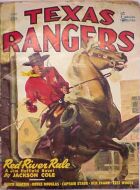
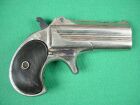 Derringer
Derringer

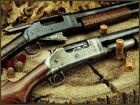
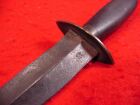

|

|
Steps to put writers on the right trail
LET'S DO THE TWIST!
Candice Proctor is not a western writer. Her sister is! But
of more immediate importance is that she has an excellent blog, csharris.blogspot.com,
where she comments from time to time on aspects of fiction of interest to
writers and readers in all genres. Past entries have covered plotting, characterization
and writing a synopsis. Candice describes herself as a former university
professor with an incurable case of wanderlust, who writes historical mysteries
under the name C.S. Harris and thrillers as one half of Steven
Graham. She has also written historical romances.
Here is a short sample of her writing about writing that could be followed
to put extra zing into most anybody's next BHW. . . .
I’VE been giving some thought lately to twists. You know, those places
in a book or movie where the story takes off in a (hopefully) unanticipated
direction, where the reader/audience says, “Wow! I didn’t see that coming.”
It seems to me that twists ought to be quantifiable. I guess it’s the academic
in me, always analysing and trying to compartmentalize things. But what is
a twist, at its most basic, except a bit of information the protagonist (and
reader) has that turns out to be wrong? Some of the most common twists are:
-
Someone the protagonist thinks is a friend turns out to be an enemy.
- Someone the protagonist thinks is an enemy turns out to be a friend.
- Someone we think is dead turns out to be alive.
- Someone we think is alive turns out really to be dead.
- Something believed lost is not really lost.
- A character’s supposed motive is seen to be impossible.
- A character has a motive that was never suspected. (This doesn’t apply
only to mysteries; think of romantic comedies where the hero woos a woman
on a bet.)
- A family relationship turns out to be different from what was believed
(an “aunt” turns out to be a mother, a child discovers he’s adopted, etc).
-
A character we think is a man turns out to be a woman, and vice versa.
I’m sure there are many, many more variations on the theme. So how about
it? What can you add to the list?
|

|
|
|
|




|
NEW
BLACK HORSE
WESTERN NOVELS
(Published by Robert Hale Ltd, London)
978
| Incident at Coyote Wells
|
Logan Winters
|
0 7090 8285 9
|
Tombstone Lullaby
|
Walt Masterson
|
0
7090 8253 8
|
Carson’s Revenge
|
Jim Wilson
|
0
7090 8353 5
|
Savage Rides West
|
Sydney J. Bounds |
0
7090 8347 4
|
The Gold Mine at Pueblo Pequeno
|
Will Keen
|
0
7090 8359 7
|
Shootout at Big King
|
Lee Lejeune
|
0
7090 8366 5
|
The Iron Roads
|
Caleb Rand
|
0
7090 8360 3
|
Too Fast to Die
|
Dempsey Clay
|
0
7090 8374 0
|
Catfoot
|
J. William Allen
|
0
7090 8375 7
|
Vengeance Unbound
|
Henry Christopher
|
0
7090 8376 4
|
Come See Me Hang
|
Chad Hammer
|
0
7090 8265 1
|
Stampede at Rattlesnake Pass
|
Clay More |
0
7090 8383 2 |
Bluegrass Bounty
|
Jack Reason
|
0
7090 8384 9
|
Christmas at Horseshoe Bend
|
J. D. Kincaid |
0
7090 8381 8
|
Rolling Thunder
|
Owen G. Irons
|
0
7090 8382 5
|
Bitter Blood
|
Clint Ryker
|
0
7090 8387 0
|
Morgan's War
|
Henry Remington
|
0
7090 8391 7
|
Trouble at Brodie Creek
|
Ben Coady
|
0
7090 8399 3
|
Mayhem in Hoosegow
|
M. Duggan |
0
7090 8401 3
|
Massacre at Empire Fastness
|
P. McCormac
|
0
7090 8400 6
|
Misfit Lil Fights Back
|
Chap O'Keefe
|
0 7090 8176 0
|
Shootout at Owl Creek
|
Corba Sunman
|
0 7090 8341 2
|
| Brannigan
|
Bill Williams
|
0 7090 8378 8
|
Red Rock Crossing
|
Greg Mitchell
|
0 7090 8419 8
|
Knife Edge
|
Tyler Hatch
|
0 7090 8416 7
|
Winter Kill
|
Frank Roderus
|
0 7090 8430 3
|
Massacre at Bluff Point
|
I. J. Parnham
|
0 7090 8424 2
|
Warwick's Battle
|
Terrell L. Bowers
|
0 7090 8423 5
|
Man on the Border
|
Dave Austin
|
0 7090 8435 8
|
Death at Bethesda Falls
|
Ross Morton
|
0 7090 8432 7
|
|



|
|
Ten new titles are
issued every month as BHWs -- tough, traditional or,
sometimes, off-trail. The brand caters for all tastes.
Black
Horse Westerns can be requested at public libraries, ordered at bookstores,
and bought online through the publisher's website, www.halebooks.com, or retailers including Blackwells, Amazon UK, WH Smith and VinersUK Books.
Trade inquiries
to: Combined Book Services,
Units I/K, Paddock Wood Distribution
Centre,
Paddock Wood, Tonbridge, Kent TN12 6UU.
Tel: (+44) 01892 837 171 Fax: (+44)
01892 837 272
Email: orders@combook.co.uk
|
|
|
|
|
|